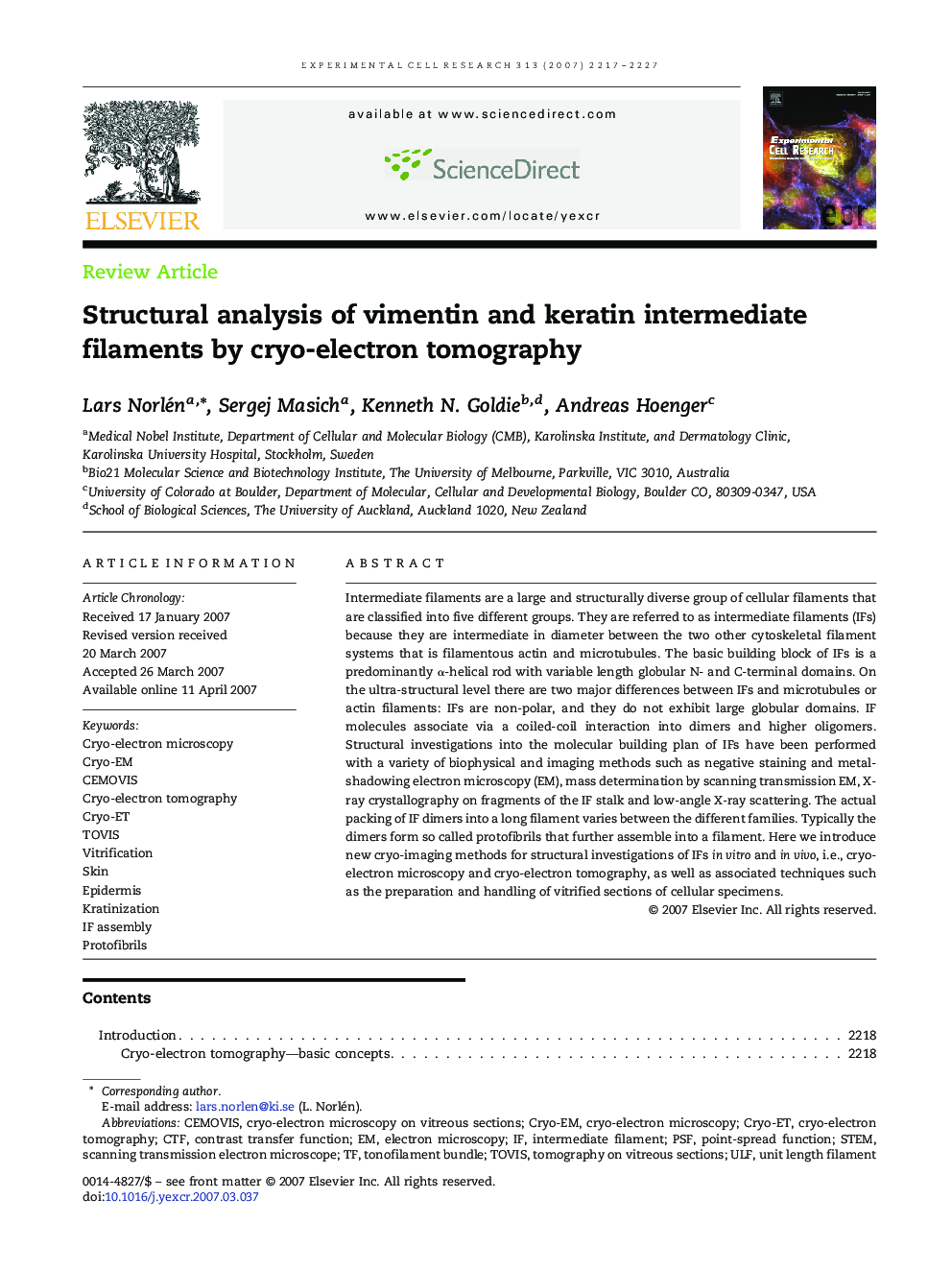| Article ID | Journal | Published Year | Pages | File Type |
|---|---|---|---|---|
| 2133080 | Experimental Cell Research | 2007 | 11 Pages |
Intermediate filaments are a large and structurally diverse group of cellular filaments that are classified into five different groups. They are referred to as intermediate filaments (IFs) because they are intermediate in diameter between the two other cytoskeletal filament systems that is filamentous actin and microtubules. The basic building block of IFs is a predominantly α-helical rod with variable length globular N- and C-terminal domains. On the ultra-structural level there are two major differences between IFs and microtubules or actin filaments: IFs are non-polar, and they do not exhibit large globular domains. IF molecules associate via a coiled-coil interaction into dimers and higher oligomers. Structural investigations into the molecular building plan of IFs have been performed with a variety of biophysical and imaging methods such as negative staining and metal-shadowing electron microscopy (EM), mass determination by scanning transmission EM, X-ray crystallography on fragments of the IF stalk and low-angle X-ray scattering. The actual packing of IF dimers into a long filament varies between the different families. Typically the dimers form so called protofibrils that further assemble into a filament. Here we introduce new cryo-imaging methods for structural investigations of IFs in vitro and in vivo, i.e., cryo-electron microscopy and cryo-electron tomography, as well as associated techniques such as the preparation and handling of vitrified sections of cellular specimens.
